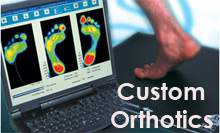
What is Respiratory (or Chest) Physiotherapy
Respiratory Physiotherapy, or more commonly known as Chest Physiotherapy (CPT) is where a physio uses movement to remove blockages (typically mucus, sputum or liquids) from the breathing passages of a patient thus improving breathing and overall well-being. The difference between a Physiotherapist and Doctor is the physio uses movement, mostly no drugs and non-invasive techniques. At times the solution can be a change in posture, pressure points on the chest, vibrational movement on the chest or some extraction device.
Common Respiratory Issues
These are known as Chronic Obstructive Pulmonary Disease (COPD)
- Emphysema – a COPD which mostly effects smokers causing a shortness of breath. It occurs as tiny air sacs in the lungs become filled with air, allowing progressively less lung-function until the patient finds breathing very difficult. Many people inflicted with this COPD also have chronic bronchitis.
- Asthma – is a trigger based COPD affecting people who are hypersensitive. Triggers can be allergies, the airways or some external change. Patients enduring an asthma attack may experience wheezing due to the airways restricting or going into spasms and a tightening in the chest.
- Bronchitis – is when the bronchial (bronchi) tubes become inflamed (air passages from the nose carrying air to the lungs). Heavy mucus or phlegm forms in the airways causing breathing difficulty. It can be acute (short-term) or chronic (long-term)
Treatment Methods
Chest physiotherapy (CPT) with bronchial drainage is the standard treatment for respiratory dysfunction. It has proven successful in restoring a patient back to health, but can be time-consuming (as it normally requires daily use) so some patients prefer quicker techniques including medication and/or the use of mechanical devices that offer patient independence and reduced therapy costs.
Adjusting the positioning of the body is important because the lungs can become compressed when the patient is in a certain position like lying flat. Hence sitting upright can relieve pressure and allow more air to flow into the lungs. Gravity-based postures can help to alleviate other issues like excess sputum, which may drain out via other channels. Vibration, percussion or shaking of the chest can also help loosen mucus in the airways. Coughs and Huffs in a certain way can help by altering the pressure of the air inside the lungs, which can help remove mucus and clear the airways.
Some of the respiratory conditions are addressed with transcutaneous (non-needles) electro-acupuncture (TCEA), laser acupuncture (LA), manual lymphatic drainage (MLD) and home exercise regime (HEP).


